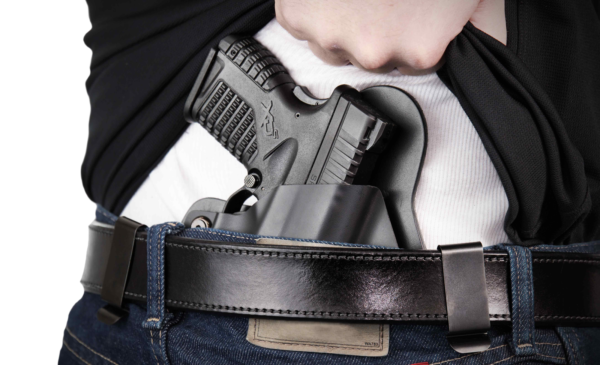
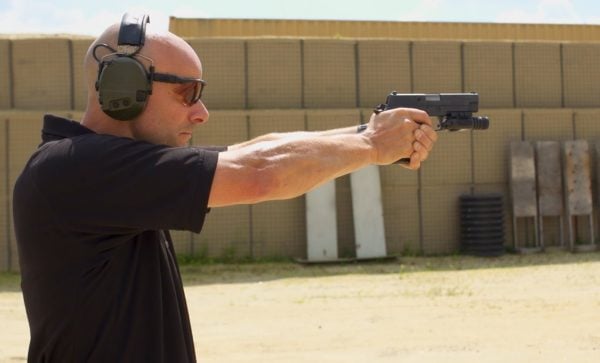
Concealed Carrying Methods
The first three concealed carry methods are done by using strong-side holsters. Strong-side side carry is a popular method that leaves the gun resting high on the waist by the dominant or strong hand.1. Inside Waistband Holster
Also known as the IWB, the inside waistband holster keeps the firearm safely secured at your waistband, usually with a clip that clasps over your belt. The IWB holster is a popular carry method because it allows for the gun to be drawn quickly.Prices accurate at time of writing
Prices accurate at time of writing
-
25% off all OAKLEY products – OAKLEY25
Copied! Visit Merchant
2. Outside Waistband Holster
Outside waistband carry is referred to as OWB. It is similar to the IWB method but keeps the handgun resting on the outside – just like the name suggests. The biggest benefit of carrying with an OWB holster is that you can carry larger handguns more comfortably while also having similar accessibility to your gun as you would with IWB.Prices accurate at time of writing
Prices accurate at time of writing
-
25% off all OAKLEY products – OAKLEY25
Copied! Visit Merchant
3. Belly Band Holster
If you’re looking for maximum coverage then the belly band method is an excellent concealed carry method. The belly band holster is an actual band that is wrapped around your midsection. It has an inside pocket for your firearm and when worn, your gun is pressed closely against your middle.Prices accurate at time of writing
Prices accurate at time of writing
-
25% off all OAKLEY products – OAKLEY25
Copied! Visit Merchant
The benefit of strong-side carrying is that your gun is easy to access without having to reach across your body. I also like strong-side carrying because drawing your pistol is done with the most basic of movements that anyone can master with a little bit of practice, which I find to be incredibly useful if you need to use your gun in a high-stress situation. Now let’s look at some other ways to carry concealed.
4. Shoulder Harness
The shoulder harness holster is the traditional holster that you see in all of the old cowboy movies and James Bond films. In this carry method, the holster is worn over the shoulder with your gun holstered and suspended underneath your arm. The benefit of using the shoulder harness is that it makes carrying bigger handguns more comfortable.-
25% off all OAKLEY products – OAKLEY25
Copied! Visit Merchant
- Angled – muzzle is angled upwards, making it relatively quick to draw.
- Horizontal – gun is drawn by pulling it straight across the body. While it’s faster than the vertical, it works best with guns with short barrels.
- Vertical – muzzle is pointed down. Generally the slowest way to draw but is the most accommodating for large-sized guns.
5. Pouch Carry
In the pouch carry option, you wear a glorified fanny pack that your gun rests in. The benefit of pouch carrying is that you’re able to stick more items in this pouch strapped to your side, but the downside is that it provides minimal accessibility as you have to take the time to open your pouch to draw your weapon.Prices accurate at time of writing
Prices accurate at time of writing
-
25% off all OAKLEY products – OAKLEY25
Copied! Visit Merchant
6. Ankle Carry
The ankle holster is the perfect way to comfortably carry a backup pistol and keep it concealed. The thing you need to consider when strapping a gun on your ankle is concealability. First, you need to make sure that you have pants big enough to conceal your gun, so leave those Wranglers at home and stick to a compact gun.Prices accurate at time of writing
Prices accurate at time of writing
-
25% off all OAKLEY products – OAKLEY25
Copied! Visit Merchant
7. Pocket Carry
If you’ve got a compact pistol and aren’t wearing tight pants, you may want to think about using a pocket holster. Great for guns like the .32 and .380, pocket holsters keep your pistol safe and secure while resting comfortably in your pocket.-
25% off all OAKLEY products – OAKLEY25
Copied! Visit Merchant
That’s a Wrap
Now that we’ve looked at different ways to conceal carry, let’s go over a couple things to remember:- Don’t draw the gun with your finger on the trigger.
- Don’t carry your weapon into places where you’re not allowed to.
- Make sure to keep your gun as concealed as possible if open carry isn’t permitted.

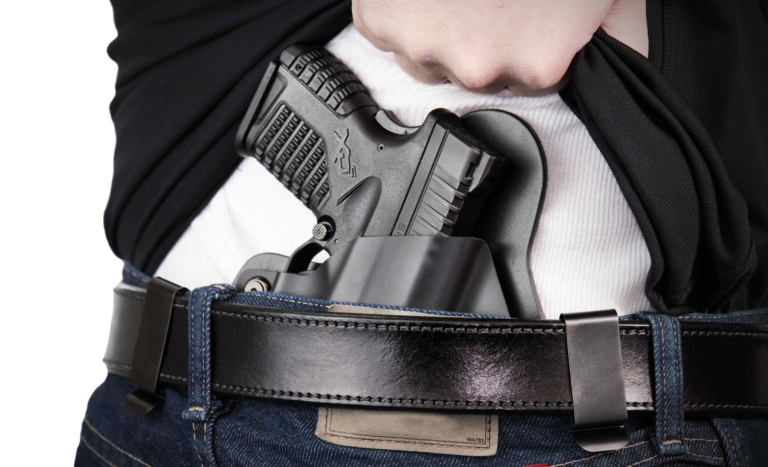







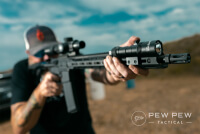

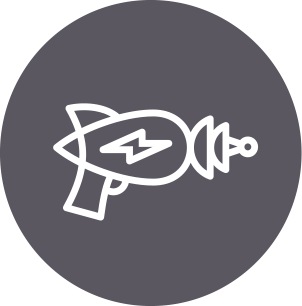
Leave a Reply